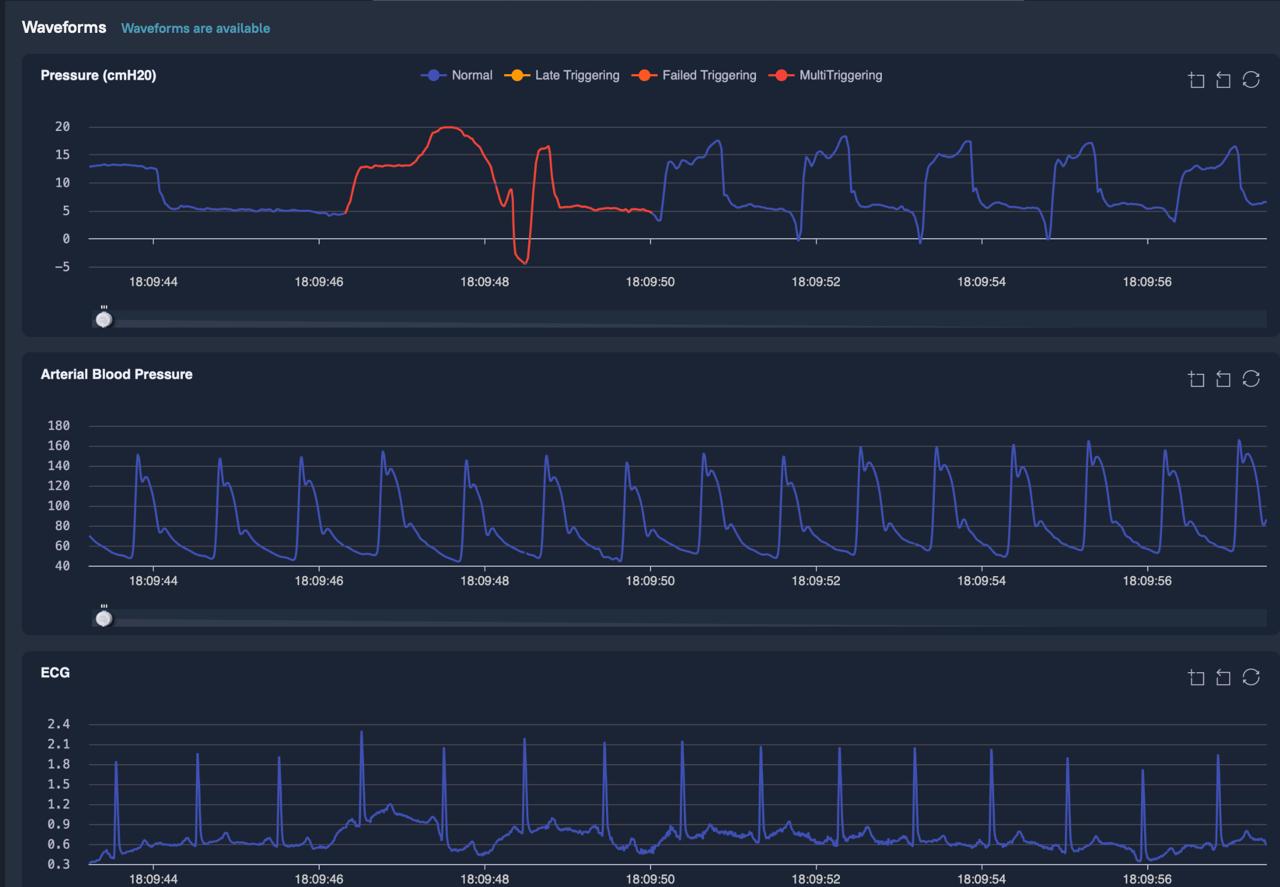
In the ICU, patient conditions evolve from minute to minute — sometimes from breath to breath. Yet most monitoring systems still rely on 1-minute or 5-minute averages, losing valuable detail in the process.
Imagine watching a movie by viewing one frame every 10 seconds — you'd miss the plot entirely. That's what happens when ICU teams rely on low-resolution data: subtle instabilities, critical shifts, and brief complications get averaged out or overlooked.
For high-stakes care, you need to see the full picture, in high frequency — not just at the ventilator level, but across the entire physiological environment.
Whether it's mechanical ventilation, circulatory support, or metabolic monitoring, low-resolution data can miss the moments that matter most.
A patient might experience:
These kinds of events can resolve quickly — but have meaningful clinical consequences. If you're only collecting data every few minutes, these insights are lost.
To understand what's really happening, clinicians need access to raw, high-frequency signals — not just simplified trends.
Even ICUs that collect high-frequency data often don't use it effectively. That's because collecting data isn't enough. To make it clinically actionable, teams need:
When this layer is missing, even excellent data becomes just another unused archive.
Until recently, collecting and processing high-frequency data across the ICU felt out of reach. Storage costs, technical limitations, and lack of integration made it impractical.
That's changed. Today, a full day of raw physiological data takes up less space than a short video file. The cost of storage has dropped. Processing power is abundant. And new platforms — like Deep Breath — make it possible to actually use this data in real time.
Deep Breath is building a platform for continuous, high-resolution ICU data — collected, processed, and made usable in real time.
We don't just monitor. We make complexity clear.
If you're working in a data-rich but insight-poor ICU, you don't need more devices. You need better access to the signals you already have.